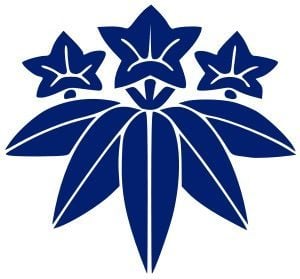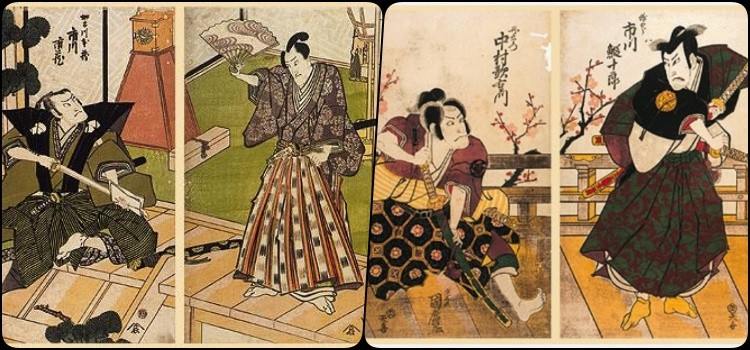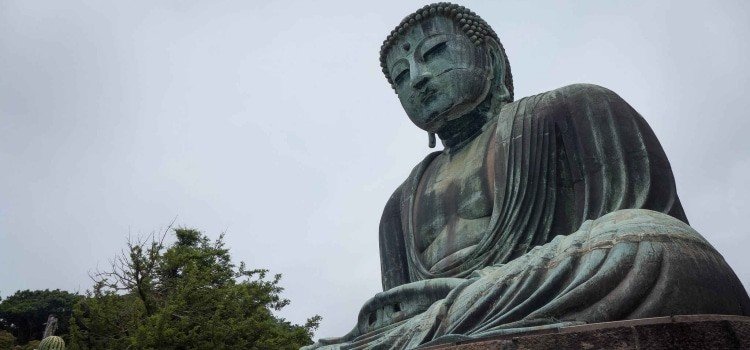Do you know the Kamakura Period or Kamakura Shogunate? In this article we will talk about what this period in Japan was like, who created it, how long it lasted, conflicts that took place during this era and much more.
In Japanese, this period is called Kamakura Bakufu [鎌倉幕府] and was officially recognized in 1192, although the period began in 1185.

Table of Content
What was the Kamakura period?
The Kamakura period was the first feudal military regime in Japan. This period became well known for the emergence of samurai and the establishment of feudalism in Japan.
The Kamakura era, or Kamakura Shogunate, began in 1185 and was so named as the administrative seat of Japan was transferred to Kamakura, a village on the eastern coast of Japan.
This period began when Minamito Yoritomo was appointed shogun (military dictator) by the emperor. The first shogunate became known as the Kamakura Bakufu.
The shogun came to have the power to choose his own vassals for administrators and protectors of the provinces. The shogunate was a form of government based on the samurai rules of conduct.
It was the time when Boshidô began to be formed, which was the samurai code of ethics. The samurai became guardians of this regime, exercising civil, military and protective functions.

The domain of the Hojo clan
After Minamoto's death and that of his sons, the Minamoto clan had no more heirs for the title of shogun, which was passed hereditarily. So, Hojo Masako, Minamoto's widow, decided to adopt a child and give him the title of shogun. This way, the Hojo clan remained in power for several decades.
In 1232, Hojo Yasutiki proclaimed the first samuraic legislation, which had 51 articles. This legislation became known as Goseibai Shikimoku, and was Japan's first code of feudal law.
During this period, Japan experienced a certain prosperity, with economic and population growth, and the emergence of new agricultural techniques.
Buddhism also saw a considerable resurgence and popularity. Currently, the main schools of Buddhism in Japan are descendants of the schools that emerged during the Kamakura period.

The War against the Mongols
The Kamakura period was a period marked by several wars and conflicts between clans and also against other peoples. One of the most interesting conflicts of this time was between the Japanese and the Mongols.
In 1274, kublai kan, king of Mongolia and grandson of one of the greatest conquerors and military strategist in the world, decided to expand his domains also conquering Japan, because he believed that Japan was a country rich in gold and other minerals. Then Kublai sent an army of 40,000 men to Hakata Bay.
Although the samurai fought valiantly to protect their territory, the numerical superiority of the Mongols was very great. So the samurai lost the battle right? Not really.
During a night of rest for the Mongols in their boats, a powerful hurricane sank several boats and forced the army to retreat. The samurai then took the opportunity to drive the Mongols out for good.
But the Mongols did not give up on conquering Japan, and in 1281 King Kublai kan sent another army, this time with more than 140,000 soldiers, which landed at the same place the other army landed, on the coast of Hakata.
For two months the samurai tried to defend their land when again, miraculously, a typhoon swept the coast of Kyushu, forcing the Mongol ships to retreat again.
Japan then defeated a much superior enemy twice thanks to their typhoons that became known as Kamikaze, which means divine wind, as the Japanese came to believe they were protected by the gods. These victories against the Mongols contributed to the emergence of a strong feeling of nationalism among the Japanese.
Despite these impressive victories, the Japanese shogunate was unable to adequately reward the warriors, as the defense expenses of the country were very high, and thus the samurai lost faith in the Kamakura shogunate.

The Battle of Sekigahara
Another important battle of the Kamakura period was the battle of Sekigahara, or "Division of the Kingdom", as it became popularly known. This conflict paved the way for Tokugawa Ieyasu to become shogun in the year 1600.
This battle took place after the death of shogun Maeda Toshiie, and began with a conspiracy against Tokugawa.
The main author of this conspiracy was Mitsunari, who with some allies declared war against Tokugawa. Mitsunari had a great numerical advantage in terms of territory over the Tokugawa army, but even so, thanks to Tokugawa's impressive military strategies, he managed to win the battle fought at Sekigahara in the year 1600.
Tokugawa then managed to control the rebellion and ascended as the last shongun of that period. The period of the Tokugawa shogunate was very important for the formation of Japan as we know it today, as much of Japanese culture is linked to this period, which lasted about two and a half centuries.
Emperors and Shoguns of the Kamakura Period
Here's a list of emperors who reigned during the Kamakura period:
| Nº | Reign | Emperor | Name in Kanji |
| 83º | 1198 to 1210 | Tsuchimikado | 土御門天皇 |
| 84º | 1210 to 1221 | Juntoku | 順徳天皇 |
| 85º | 1221 | Chukyo | 仲恭天皇 |
| 86º | 1221 to 1232 | Go-Horikawa | 後堀河天皇 |
| 87º | 1232 to 1242 | Shijo | 四条天皇 |
| 88º | 1242 to 1246 | Go-Saga | 後嵯峨天皇 |
| 89º | 1246 to 1260 | Go-Fukakusa | 後深草天皇 |
| 90º | 1260 to 1274 | Kameyama | 亀山天皇 |
| 91º | 1274 to 1287 | Go-Uda | 後宇多天皇 |
| 92º | 1287 to 1298 | Fushimi | 伏見天皇 |
| 93º | 1298 to 1301 | Go-Fushimi | 後伏見天皇 |
| 94º | 1301 to 1308 | Go-Nijo | 後二条天皇 |
| 95º | 1308 to 1318 | Hanazono | 花園天皇 |
| 96º | 1318 to 1336 | Go-Daigo | 後醍醐天皇 |
See below a list of Shoguns who ruled during the Kamakura Period:
| No | shogun | Reign |
| 1 | Minamoto no Yoritomo (1147–1199) | 1192 to 1199 |
| 2 | Minamoto no Yoriie (1182–1204) | 1202 to 1203 |
| 3 | Minamoto no Sanetomo (1192–1219) | 1203 to 1219 |
| 4 | Kujō Yoritsune (1218–1256) | 1226 to 1244 |
| 5 | Kujō Yoritsugu (1239–1256) | 1244 to 1252 |
| 6 | Prince Munetaka (1242–1274) | 1252 to 1266 |
| 7 | Prince Koreyasu (1264–1326) | 1266 to 1289 |
| 8 | Prince Hisaaki (1276–1328) | 1289 to 1308 |
| 9 | Prince Morikuni (1301–1333) | 1308 to 1333 |
